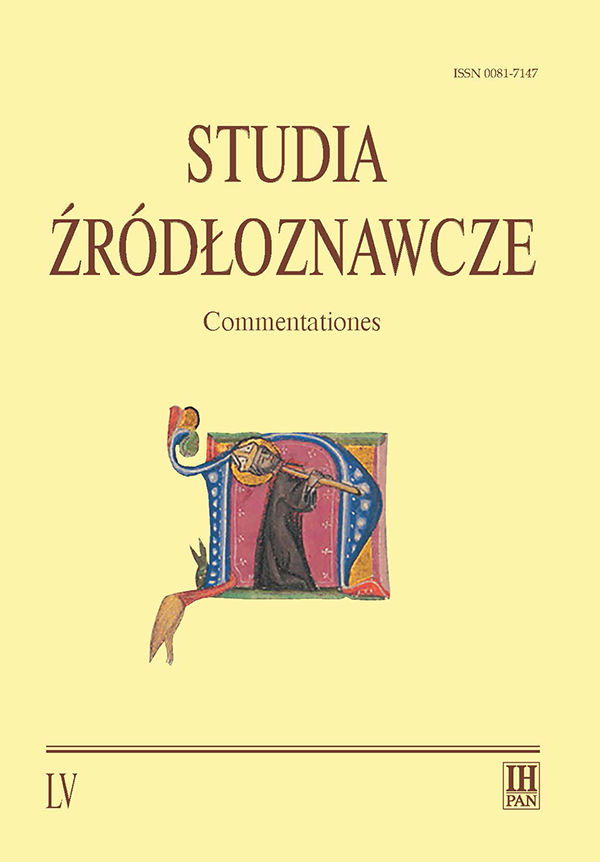Piętnastowieczny rękopis Vita sancti Adalberti prior ze zbiorów biblioteki klasztornej w Herzogenburgu (z aneksem w sprawie niektórych lekcji kodeksu Klosterneuburg, Stiftsbibliothek 707)
Fifteenth-century manuscript of the Vita sancti Adalberti prior from the collection of the monastic library at Herzogenburg (with an annex concerning certain readings of Codex Klosterneuburg, Stiftsbibliothek 707)
Author(s): Szymon WieczorekSubject(s): Cultural history, Diplomatic history, Oral history, 15th Century
Published by: Instytut Historii im. Tadeusza Manteuffla Polskiej Akademii Nauk
Keywords: Vita sancti Adalberti prior;manuscript;15th century;Erhart von Weitra;Herzogenburg;Stiftsbibliothek cod. 57; Klosterneuburg; Stiftsbibliothek cod. 707
Summary/Abstract: The last section of a collective codex (inventory no. 57) kept in the library of the Canons Regular Priory in the Lower Austrian locality of Herzogenburg contains a small legendarium in the fifteenth-century handwriting by a single scribe. The legendarium is composed of more than ten hagiographic works, which include (fols. 235v–244v) a copy of a so-called imperial (“A”) edition of the oldest life of St. Wojciech (Adalbert). This manuscript had not been taken into consideration in heretofore research dealing with the history of the text. The hagiographic collection from the codex in question was written in 1430 or somewhat later, as it follows from an annotation made by the scribe, Erhart of Weitra, probably a lay clergyman attested in the 1420s. The detailed motives of embarking upon this task, just as the original purpose of the collection, remain unknown. Nor are we familiar with the circumstances in which it found itself in Herzogenburg. A comparison of the Herzogenburg copy of Vita prior s. Adalberti with other manuscripts of this work makes it possible to ascertain that the sole prototype of the copy executed by Erhart was the manuscript preserved up to this day and known to researchers (Klosterneuburg, Stiftsbibliothek, cod. 707, fols. 107r–119v). The article’s appendices collate characteristic readings of the Herzogenburg copy of Vita prior and those distinguishing it from the Klosterneuburg version. The author has also added supplements and corrected certain information about the readings of the latter manuscript offered in the edition by Jadwiga Karwasińska.
Journal: Studia Źródłoznawcze. Commentationes
- Issue Year: 2017
- Issue No: 55
- Page Range: 101-125
- Page Count: 25
- Language: Polish

